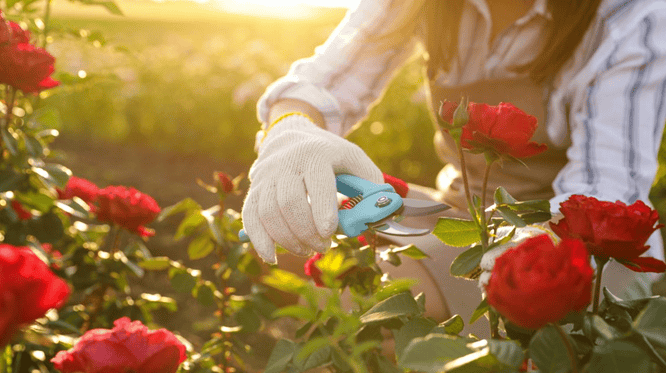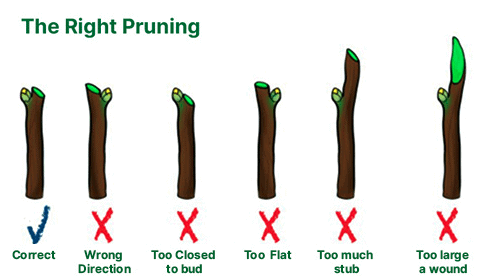Prune Roses Properly in Fall for Gorgeous Spring Blooms in Lancaster Pa and Lebanon Pa
Pruning roses in the fall isn’t just about tidying your garden; it’s a necessary step for vibrant, healthy blooms when spring arrives. Whether you’re a seasoned rose enthusiast or a homeowner in Lancaster, PA or Lebanon, PA looking to enhance your landscaping, proper pruning techniques can make all the difference for your rose care routine.
This guide will walk you through the right tools, step-by-step pruning instructions, and crucial post-pruning care tips, while also helping you avoid common pitfalls. By the end, you’ll feel confident tackling your rose bushes and preparing them for the colder months ahead.

Why Prune Roses in the Fall
Fall pruning is essential for maintaining the overall health of your roses. It helps:
- Prevent Disease: Removing dead or diseased wood reduces the chance of pests and infections overwintering.
- Promote New Growth: Proper pruning allows the plant to focus its energy on growing healthy stems and producing vibrant blooms.
- Shape the Plant: Tidying up your rose bush makes it more manageable during the spring growth period.
- Winter Protection: Shortening long stems prevents wind damage in harsh winter conditions.
If you live in areas like Lancaster, PA or Lebanon, PA where winters can be unpredictable, fall pruning is a crucial step for keeping your rose plants thriving year-round. If you would rather the professionals handle this for you, just give Breneman’s Landscaping a call for a free quote.
Tools You’ll Need for Pruning Roses
The right tools can make all the difference when it comes to effective pruning. Here are the essentials you’ll need for the job:
1. Pruners
Invest in a high-quality pair of bypass pruners. These provide a clean cut that’s easier for the plant to heal compared to crushing or tearing the stems.
2. Thick Gardening Gloves
Roses are beautiful, but they’re also thorny! A sturdy pair of gloves will protect your hands from scratches while providing better grip and control.
3. Rubbing Alcohol or Bleach Solution
Sanitize your tools between cuts (especially when working with diseased wood) to prevent spreading bacteria or viruses.
4. A Small Handsaw
For those older, thicker canes that can’t be tackled with pruners, a handsaw will allow you to make clean cuts without straining.
5. Protective Gear
Eye protection is always a good idea for shielding yourself against rogue branches and flying debris.
Stocking up on these tools ahead of time ensures an efficient and safe pruning session.

Step-by-Step Guide to Pruning Roses in the Fall
Pruning can feel intimidating, but following these steps will ensure your roses are primed for success:
Step 1. Remove Dead, Diseased, or Damaged Wood
Start by identifying dead or diseased canes. You can spot these by their brown, shriveled appearance. Cut these stems back to healthy, green tissue, being sure to make your cut at least an inch below the diseased area.
This step is essential to prevent pests and diseases from overwintering in your plants.
Step 2. Eliminate Crossed or Rubbing Canes
Look for branches that are crossing or rubbing against each other. Over time, this rubbing can cause wounds, which can become entry points for disease. Remove the weaker or less favorable stem to avoid these problems.
Step 3. Shape and Shorten the Plant
Trim overly long canes to minimize wind damage during heavy winter storms. Shape the bush by maintaining an open center, as this increases airflow and reduces the risk of fungal diseases come spring.
Step 4. Make Proper Cuts
Always cut at a 45-degree angle, about 1/4 inch above an outward-facing bud. This angle promotes water runoff, preventing rot, while the outward-facing bud encourages new growth to develop away from the center of the plant.
Step 5. Clean Up Debris
After pruning, gather and dispose of all clippings and dead leaves. Leftover debris can harbor pests and diseases, undoing all your hard work.
Following these steps will prepare your roses for a healthy dormancy and set them up for a stunning spring display.
Post-Pruning Care to Keep Roses Healthier
Pruning is only one part of fall rose care. Taking extra steps afterward will ensure your roses are well-protected during the winter months:
1. Fertilize Sparingly
After pruning, apply a slow-release fertilizer specifically designed for roses. This will allow nutrients to slowly nourish your plants over the dormant season, promoting a burst of growth in spring.
2. Add Mulch
Layer 2-3 inches of organic mulch around the base of your rose bushes to insulate the roots and retain moisture. Mulch helps protect your plants from temperature fluctuations and prevents erosion.
3. Hydrate Before the First Frost
Water your roses deeply to help their roots stay hydrated before the ground freezes. This is particularly helpful if you’re in frost-prone regions like Lancaster, PA or Lebanon, PA.
4. Protect with Rose Collars
If winters in your area are severe, consider placing rose collars filled with straw around the base to shield the plant from extreme cold and frost.
Taking the time for proper post-pruning care will ensure your roses are ready to flourish come spring.
Common Mistakes and How to Avoid Them
Even seasoned gardeners can make mistakes. Avoid these pitfalls to ensure your roses stay healthy:
- Pruning Too Late in the Season: Aim to prune before the first frost. Late pruning can stimulate new growth that will be vulnerable to freezing temperatures.
- Over-Pruning: While it’s tempting, avoid excessive pruning as it can weaken the plant and affect next year’s blooms.
- Cutting at the Wrong Angle: Always make cuts at a 45-degree angle to avoid water pooling and potential rot.
- Not Cleaning Tools: Failing to sanitize your tools can spread diseases between plants. Keep a disinfectant handy and clean tools between cuts.
Learning from these common missteps will help you become a more confident and skilled gardener. At Breneman’s Landscaping, we take great pride in preparing your yard and flowers for the winter ahead.
Set Your Roses Up for Success This Fall
Pruning roses properly in the fall is a simple yet powerful way to support your garden’s health and beauty. With the right tools, a step-by-step approach, and some post-pruning care, you can ensure your roses are thriving when spring rolls around.
If you’re located in Lancaster, PA or Lebanon, PA, now is the perfect time to start caring for your roses. Remember, a little effort in the fall goes a long way toward reaping the rewards of vibrant, stunning blooms. Call Breneman’s Landscaping today for a free quote on fall clean up and trimming those thorny roses bushes!
